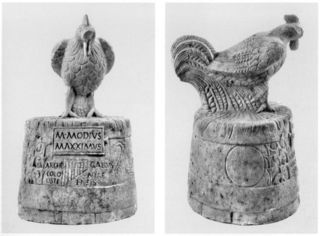Marcus Modius Maxximus and the art of commemoration
I am in the process of finishing the three lectures on Roman memorials and epitaphs that I am doing for Bard College in a couple of weeks. The first one is done and dusted, and focuses on the Tomb of the Scipios, its history both ancient and modern. After a few weeks of obsessive delving, I have found some rather extraordinary and unexpected things about the modern side of this, which I shall soon reveal (Bard must have it first ��� but I have to confess I am feeling full of nerdish pleasure about it).
The second one I am writing now, and it is really concentrating on the way that Roman epitaphs can take us into the cultural world of the non-elite in the Roman empire. And that includes the visual puns and jokes that a striking number of these memorial lines and images traded on. The lecture���s picking up, and drawing together, some topics I���ve been interested in for a long time.
Several years ago I did a lot of work on a strange epitaph of a castrated priest ��� a gallus -- of the goddess Magna Mater (Cybele); it was originally from Ostia and is now in the Vatican, not all that far from the sarcophagus of Scipio Barbatus, in fact. It was the first time I saw quite how clever these ���ordinary��� Roman epitaphs could be. The man���s name was Marcus Modius Maximus (or Maxximus as he spelled it), and he was described on his memorial stone as the ���archigallus���, the ���chief priest��� of Magna Mater. But he, or his commemorators, had written his name into the stone in a very different way too and it was the extraordinary form of thing that interested me most. This isn���t how most Roman epitaphs look.
It wasn���t all that hard to work out. The bottom of the strange memorial was in the shape of a Roman corn measure (or ���modius). And on the top was a splendid cockerel, that���s ���gallus��� in Latin. It was in other words a speaking stone, representing the name of the man in visual terms, or punning on the man���s name and position as ���(archi)gallus).
Without giving the game away, Lecture two takes off from there, hoping to display the linguistic cleverness of ordinary Roman commemorative practices, and Rome as a punning culture. Ovid might have had repeated fun with word play at the cutting edge of Roman elite versifying, but the fact is so did those much further ���down��� the Roman cultural foodchain.
And Lecture three? It���s how to memorialise a Roman woman.
Mary Beard's Blog
- Mary Beard's profile
- 4110 followers




